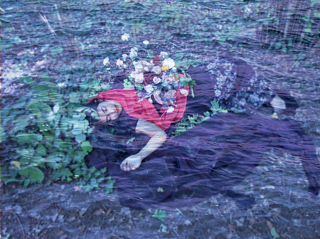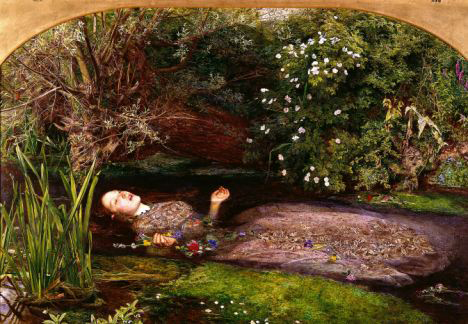Human Flower Project
Who Was the Real Ophelia?
A new piece of historical scholarship suggests that William Shakespeare might have been inspired by the tragic death of a flower picking toddler.

Ophelia, by Pagli Rajkonna
Photo: Pagli Rajkonna
OPHELIA
There’s rosemary, that’s for remembrance; pray,
love, remember: and there is pansies. that’s for thoughts.
LAERTES
A document in madness, thoughts and remembrance fitted.
OPHELIA
There’s fennel for you, and columbines: there’s rue
for you; and here’s some for me: we may call it
herb-grace o’ Sundays: O you must wear your rue with
a difference. There’s a daisy: I would give you
some violets, but they withered all when my father
died: they say he made a good end,—
(Sings)
For bonny sweet Robin is all my joy.
(Hamlet, Act IV, Scene 5)
And the great William Shakespeare is all to be construed.
Steven Gunn, a historian at Oxford University, has fished out a new clue to the Bard’s tragic character Ophelia. Last seen wandering out of-doors, passing out herbs and flowers with some arcane instructions, she seems to have gone mad with grief and is discovered drowned at the end of the play’s fourth act.
Filtering through reports of 16th Century English coroners – good fun!—Gunn found that in 1569, a two-year old girl named Jane Shaxpere “fell into a mill pond and drowned while picking flowers, called ‘yelowe boddles,’” better known today as corn marigolds.

Corn marigolds, growing in the Machair of the Outer Hebrides, Scotland
Photo: BCTV
Gunn proposes that the five year old Will Shakespeare, living just 20 miles off in Stratford-on-Avon, may have heard of the accident; in fact, tiny Jane might have been a cousin and the coroner not a very good speller. Perhaps the story lodged in the boy’s memory, to break loose in the composition of Hamlet.
Earlier Shakespeare scholars turned up the drowning of Katherine Hamnet in 1579 as a possible inspiration for Ophelia. “Though it was eventually concluded that she had overbalanced while carrying some heavy pails, rumours that she was suffering from a broken heart were considered plausible enough for an inquest to be conducted into whether her death was a suicide. It is possible that Shakespeare – 16 at the time of the death – recalled the romantic tragedy.”

Ophelia, painted by John Everett Millais (1851-52): this image of Shakespeare’s damsel—on her back, arms open, lips parted—has served as the model for most renderings since: a classic of necrophilic art.
Photo: via Elsinore
Learning of Gunn’s recent discovery, Emma Smith, a scholar of English literature at Oxford, remarked “It’s a good reminder that, while Shakespeare’s plays draw on well-attested literary sources, they also often have their roots in gossip, the mundane, and the domestic detail of everyday life.”
Gunn’s search through the coroners’ records in fact turned up several cases of death-by-drowning-while-flower-picking – a strange and poignant accident that occurs in these times too.

